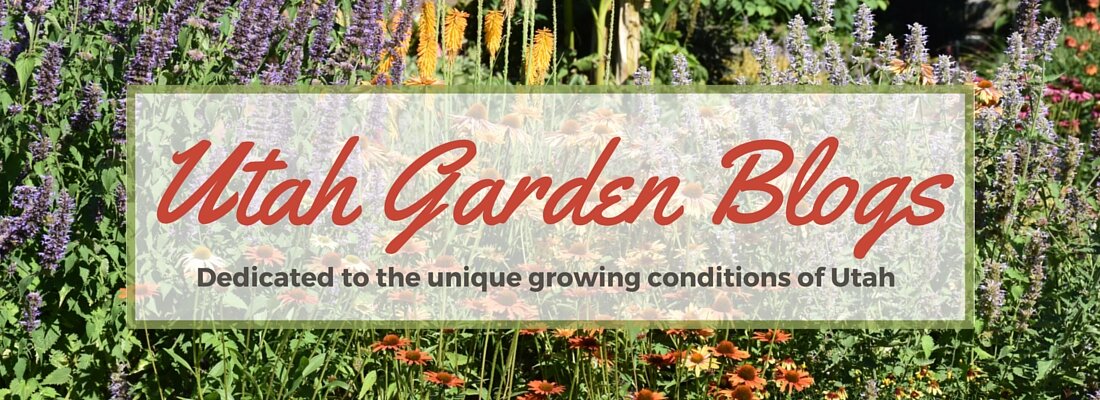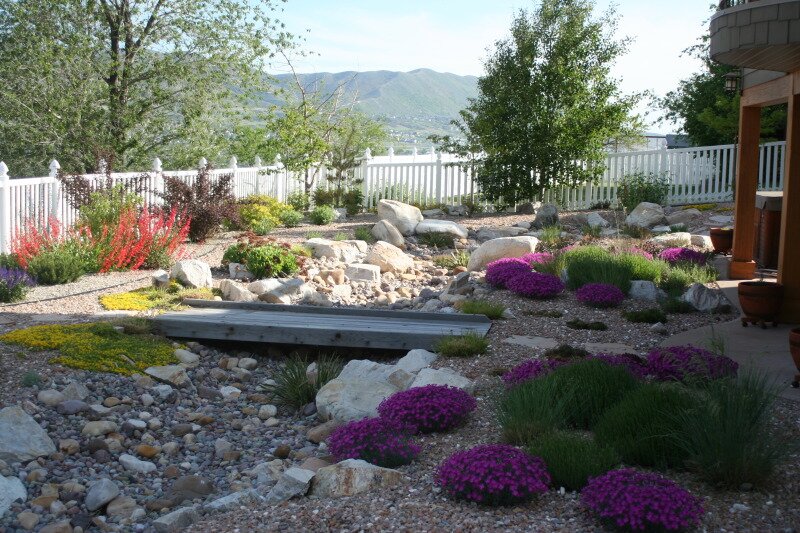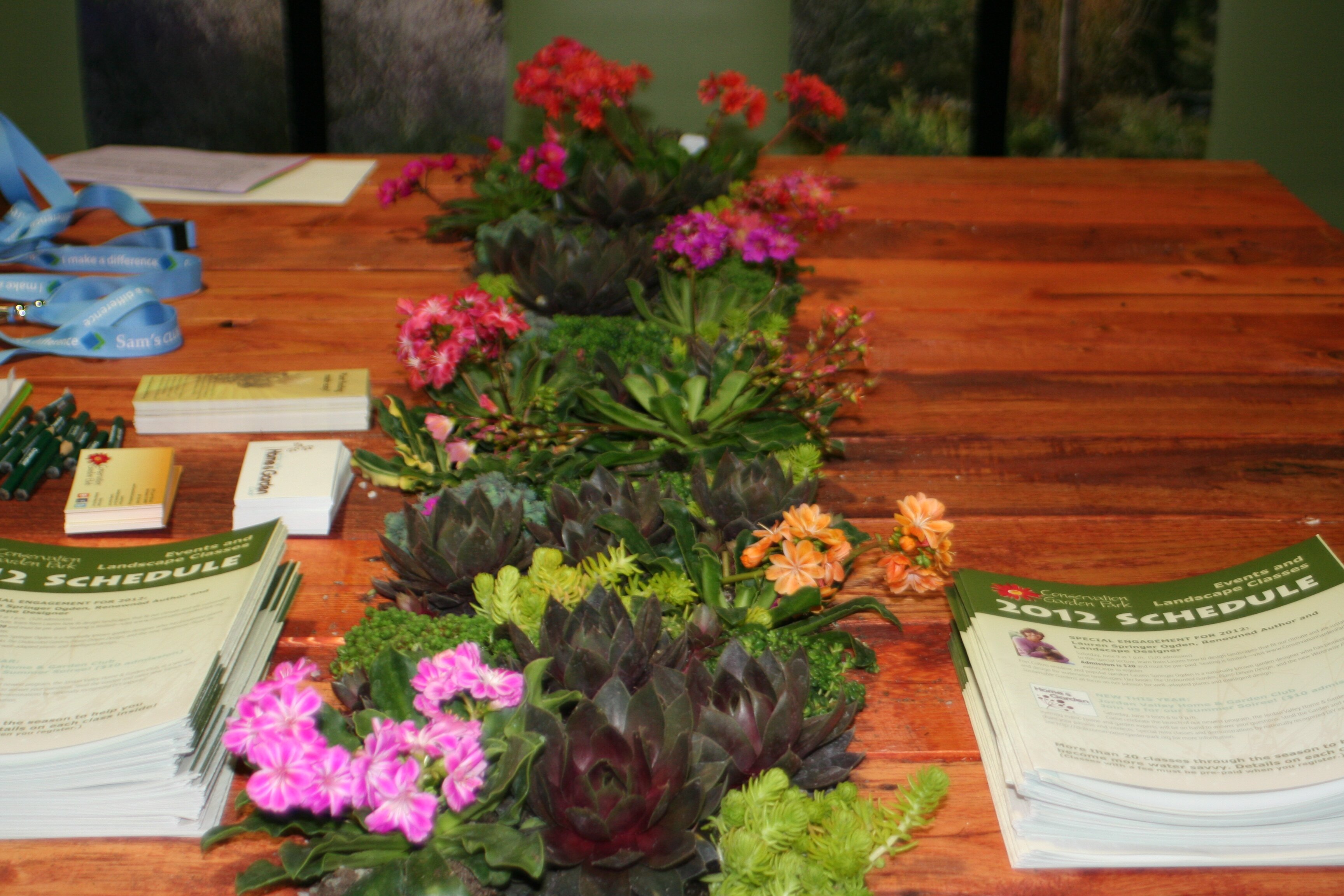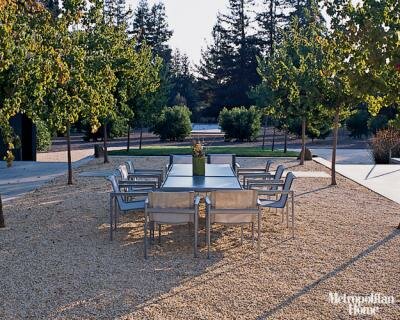It’s true that you can have a wonderful, lawn-free landscape BUT it also requires careful design in order to ensure you don’t end up with a cluttered, hot mess! Why is designing a lawnless landscape so challenging? Well, to understand that we must first understand why lawns are so appealing in the first place- beyond the obvious recreational reasons.
Waterwise Landscape designed and installed in 2008
In the above space which I designed for a client a few years back, the dry river bed serves as the key visual element in the design. While I generally like a little more plant coverage and would like to ‘shrub up’ the edges of the river bed, I still think it looks pretty good thanks to the careful care and attention of the homeowners.
Whether we realize it or not, lawns fulfill a key element in any design- the negative space. In magazines and newspapers they call it the ‘white space’. The biggest design error I’ve seen in waterwise landscapes if failure to recognize and plan for ‘white space’ in a design. Traditionally, lawn fills that need. It is a consistent green color with a uniform texture that rests the eye in between more interesting plantings. Of course, if the landscape is nothing but lawn, the resting continues as the monotonous look will put anyone to sleep!
Lawns are also an organizing element. They create edges where they interface with beds, hardscapes and houses. And we LIKE edges- it’s one of the key Lynch Elements that explain how humans understand and navigate space (Cognitive Mapping). It’s certainly possible to use other organizing elements or a lawn alternative to the same end- but there must be organizing elements, not just a hodge podge of haphazardly placed plants.
If we are going to eliminate lawn and it’s VISUAL function, we have to replace it with something else that fills a similar need. This can be accomplished by planting ‘alternative lawns’ such as Creeping Thyme or Creeping Juniper. It can also be accomplished by creating empty space- on purpose! A great example of this was published in Sunset Magazine and is featured on their website. 
Notice how the gravel forms open space with dense plantings around the edges? That’s the kind of balance of positive/negative space you need if you are going to eliminate green lawn but retain a feeling of lushness in the yard. Now, having DENSE plantings around the edges is also key. The negative space needs positive space to play off- it’s the CONTRAST that is so appealing to us.
Hillside slope with waterwise plants
One needn’t get rid of all the grass to have a waterwise yard- just reducing the total area and keeping it to a contiguous, logical area will work. Look for little strips of lawn to eliminate. Anchor those “Utah Islands” to edges or change the side yard from a half-dead lawn pass through to a waterwise cottage garden experience. A little at a time- we can do it!





Ann Wixom
June 28, 2011 at 1:59 pmThanks for these ideas. This is what I am working towards as we install our landscaping.
Monica
July 13, 2011 at 2:50 pmHow can I find out more info on hiring you to give me some ideas on what to do with my yard? You do great work!
Cynthia
July 14, 2011 at 9:43 amMonica,
I can give you ideas for free if you can come and visit me at the Garden I now work for. I will e-mail you.